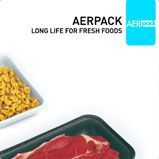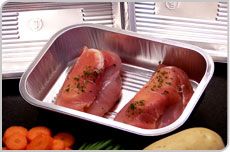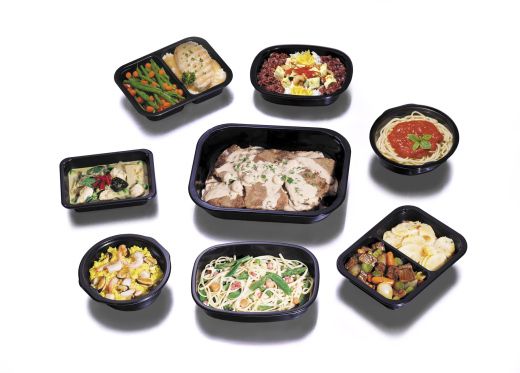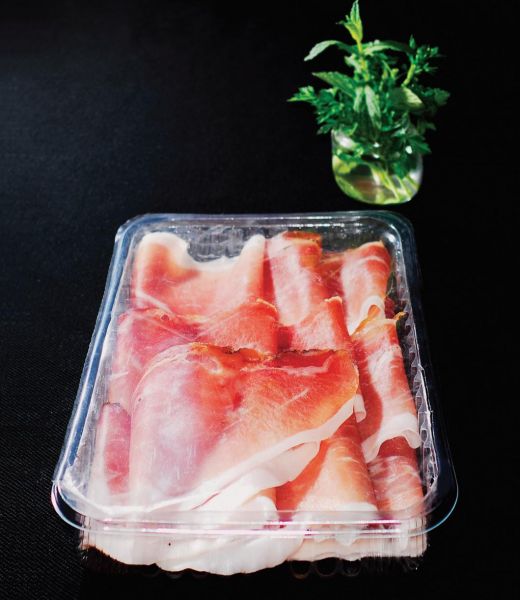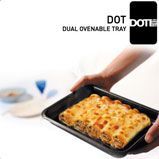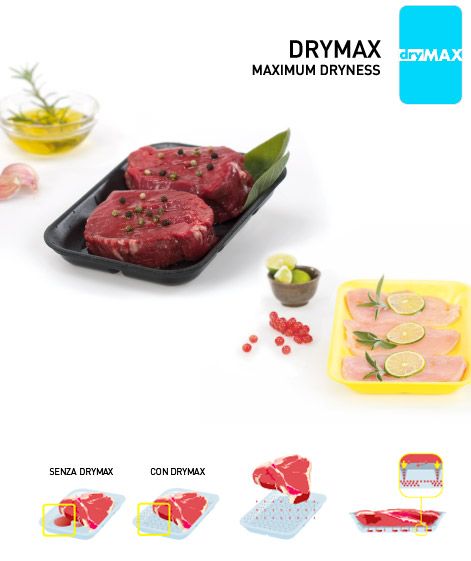-
-
- Barrier trays: BPCX AerPack
- Absorbent barrier trays: BPCX AerDry
- AluTrays for cooking: BPCX
- CPET-trays for cooking: BPCX APT
- BPCX CRISTALPACK
- PP - containers: BPPP
- DualOvenTray: BPCX DOT
- Absorbent EPS trays: BPCX DryMax
- Standard trays: BPCX EPS
- BPCX IceCREAM containers
- systems for packing: BPCX MAP
- XPLA-trays: BPCX NaturalBox
- BPCX CATERING
- Fruit&Vegetables: BPCX
- Stretching films: BPCX PVC
- Thermoforming films: BPCX
- Films for top-lidding: BPCX
- Absorbent pads: BPCX
- PRINTED films: BP PVC
- Brand new products: BP
The packed food product requires protection, tampering resistance, and has special physical, chemical, or biological needs of protection. It also shows the product that is labeled to show any nutrition information on the food being consumed.
Packaging has several objectives:
-> Physical protection: The food enclosed in the package may require protection from, among other things, shock, vibration, compression, temperature, etc.
-> Barrier protection: A barrier from oxygen, water vapor, dust, etc., is often required.
-> Containment or agglomeration: Small items are typically grouped together in one package for reasons of efficiency.
-> Information transmission: Packages and labels communicate how to use, transport, recycle, or dispose of the package or product. Some types of information are required by governments.
-> Marketing: The packaging and labels can be used by marketers to encourage potential buyers to purchase the product. Package design has been an important and constantly evolving phenomenon for several decades.
-> Security: Packaging can play an important role in reducing the security risks of shipment. Using packaging in this way is a means of retail loss prevention.
-> Convenience: Packages can have features which add convenience in distribution, handling, stacking, display, sale, opening, reclosing, use, and reuse.
-> Portion control - Single serving packaging has a precise amount of contents to control usage. Bulk commodities can be divided into packages that are a more suitable size for individual households.
Quick Links
- PACKAGES
- Barrier trays: BPCX AerPack
- Absorbent barrier trays: BPCX AerDry
- AluTrays for cooking: BPCX
- CPET-trays for cooking: BPCX APT
- BPCX CRISTALPACK
- PP - containers: BPPP
- DualOvenTray: BPCX DOT
- Absorbent EPS trays: BPCX DryMax
- Standard trays: BPCX EPS
- BPCX IceCREAM containers
- systems for packing: BPCX MAP
- XPLA-trays: BPCX NaturalBox
- BPCX CATERING
- Fruit&Vegetables: BPCX
- Stretching films: BPCX PVC
- Thermoforming films: BPCX
- Films for top-lidding: BPCX
- Absorbent pads: BPCX
- PRINTED films: BP PVC
- Brand new products: BP
- SITE MAP
- About us
- Products
- New products
- Contacts
Contacts
Address: 5, Galabets str., 8.Office, 1505 Sofia, Bulgaria
Telephone: +359 (02) 943 91 30; +359 (02) 943 91 31; +359 (02) 943 91 32; +359 (02) 943 91 33; +359 886 098196 Fax: +359 (02) 943 91 34
E-mail: info@bulpro2004.com
BULPRO 2004 Ltd, : BG131194744

 Български
Български English
English
